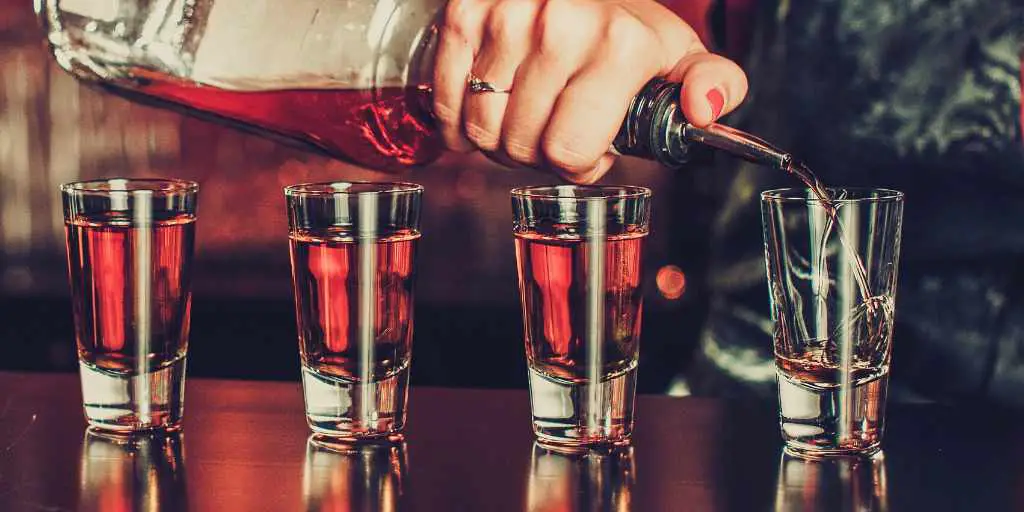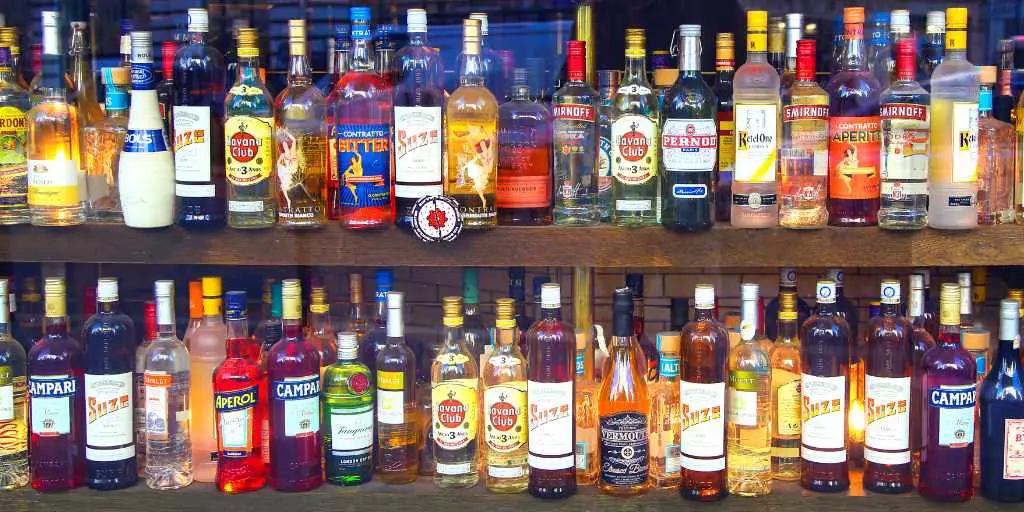The whiskey sour, a classic cocktail with a rich history, has become controversial in recent years. The primary contention among mixologists and enthusiasts is whether this delectable drink should be shaken or stirred. The preparation method can significantly impact the whiskey sour’s presentation, texture, and overall flavour, making this debate an essential aspect of the cocktail’s artful creation.
Understanding the whiskey sour’s historical context illuminates the evolution of its preparation techniques. Traditionally, this cocktail was shaken to emulsify its ingredients, such as raw egg white and citrus juices, resulting in a richer and frothier texture. However, the stirred method has also gained popularity among some, who prefer a smoother, more visually transparent drink. Professional bartenders often favour the shaking method, but personal preferences and individual tastes significantly determine the ideal preparation technique.
Key Takeaways
- Whether shaken or stirred, the whiskey sour’s preparation method influences its texture and flavour.
- The shaking method brings a richer and frothier texture, while the stirred method creates a smoother, more transparent appearance.
- Personal preferences and individual tastes contribute to the ongoing debate on the optimal preparation technique for a whiskey sour.
Historical Context of the Whiskey Sour
The Whiskey Sour is a classic cocktail rooted in the United States during the 18th century. At that time, the drink was a simple mixture of whiskey, water, and lemon or lime juice, often consumed by sailors to prevent scurvy, a disease caused by a lack of vitamin C. As time went on, the recipe evolved to include sugar, resulting in a more palatable and well-rounded cocktail.
In the mid-1800s, the Whiskey Sour was officially documented and gained widespread popularity. Different drink variations emerged over the years, including the Boston Sour, where egg white is added to the mixture, and the New York Sour, topped with a dash of red wine.
To shake or stir has always been an ongoing debate when it comes to cocktails, and the Whiskey Sour is no exception. Traditionally, the drink is shaken, as it incorporates citrus juice that needs to be thoroughly combined with the other ingredients. Shaking the cocktail also helps create a frothy texture, which is particularly important when including egg white in the recipe.
However, some prefer their Whiskey Sour stirred, as they claim it results in a smoother, silkier texture. Ultimately, whether to shake or stir a Whiskey Sour is a matter of personal preference, with both methods producing an enjoyable cocktail with distinct qualities.
Essentials of Whiskey Sour Preparation
Role of Dilution
Shaking or stirring a Whiskey Sour primarily helps in diluting the cocktail. Dilution is crucial in balancing the flavours, reducing the alcohol’s strength, and achieving the desired taste. Cocktails containing bitter, sour or sweet ingredients are typically shaken to achieve the right consistency and mix the ingredients properly. In contrast, drinks with clear spirits and no juices or syrups are stirred.
Texture and Aeration
The choice between shaking and stirring the cocktail also affects the texture and aeration. When shaken vigorously, a Whiskey Sour gains a frothy and velvety texture while aerating the liquid, which adds to the flavour enhancement. Shaking mixes the ingredients thoroughly and introduces tiny air bubbles, giving the cocktail a lighter mouthfeel. You will achieve a smoother, silkier texture in a stirred whiskey sour with less aeration.
Do I Need Egg In a Whiskey Sour?
The decision to include egg whites in whiskey sour depends on personal preference. Adding egg whites creates a richer, creamier texture and contributes to a smooth head of foam2. Egg whites used in cocktails are typically flavourless and do not affect the overall taste of the drink. Organic eggs, or pasteurized eggs can be used for fresh and safe ingredients. If you prefer a denser, richer Whiskey Sour, include egg whites. If not, simply exclude them from your recipe.
By understanding the effects of shaking or stirring a whiskey sour, you can make an educated choice based on your preferred texture and taste. Remember that dilution plays a key role in balancing the flavors, while the method of mixing will influence the drink’s texture and aeration. Lastly, consider including or excluding egg whites based on your preference for a richer or lighter whiskey cocktail.
The Shaking Method
Benefits of Shaking
Shaking a cocktail, such as a whiskey sour, has several advantages over stirring. First, it chills the drink more quickly and effectively, as the ice is actively moving and coming into contact with the liquid. Second, shaking combines the ingredients thoroughly, creating a seamless blend of flavours.
One key benefit specific to whiskey sours is the aeration achieved during shaking. Whiskey sours contain egg whites, which require a proper shake to create a frothy texture. This aeration is difficult to achieve with stirring alone, giving the whiskey sour its signature creamy, frothy appearance and mouthfeel1.
Technique for Shaking
To properly shake a whiskey sour, follow these steps:
- Add all ingredients (whiskey, lemon juice, simple syrup, and egg white) to a cocktail shaker.
- Fill the shaker with ice.
- Secure the shaker by ensuring the two halves are tightly fitted together.
- Hold the shaker firmly with both hands and shake vigorously for about 10-15 seconds or until the shaker becomes very cold.
- After shaking, carefully separate the halves and strain the cocktail into a glass.
While preparing a whiskey sour, it is essential to avoid over- or under-shaking. A proper shake will yield a smooth, creamy, and frothy texture, adequately chilled and well-blended drink.
The Stirring Method
When to Stir a Whiskey Sour
In general, cocktails containing only spirits and no mixers, such as a Manhattan or a Martini, should be stirred. However, a Whiskey Sour contains both fresh lemon juice and a sweetening agent, which can create a smoother texture when shaken. Despite this, some whiskey enthusiasts might prefer the stirring method for their Whiskey Sour to reduce aeration and dilution, maintaining a stronger whiskey flavour. A stirred Whiskey Sour typically results in a silky, less frothy drink than its shaken counterpart.
Technique for Stirring
- Assemble your ingredients: You’ll need whiskey, lemon juice, simple syrup or sugar, and optionally, an egg white for a traditional Whiskey Sour.
- Prepare your glassware: Chill a rocks glass or a coupe glass by filling it with ice or placing it in the freezer for a few minutes.
- Measure and add the ingredients. In a mixing glass, combine:
- 2 oz whiskey
- ¾ oz freshly squeezed lemon juice
- ½ oz simple syrup or sugar
- Optional: 1 egg white (if using egg white, ensure that it is thoroughly combined with the other ingredients before adding ice)
- Add ice to the mixing glass: Fill it with ice, ensuring there is enough to keep the drink cold as it’s stirred.
- Stir the cocktail: Using a bar spoon or a long-handled spoon, stir the mixture in the mixing glass for about 30 seconds. This allows for a proper dilution and chilling of the drink.
- Strain and serve: Remove the ice from the now-chilled serving glass and strain the stirred Whiskey Sour into it. If desired, garnish with a lemon twist, cherry, or both.
Cocktail cherry, Maraschino cherry or cherry garnish for the Whiskey Sour?
When it comes to garnishing a Whiskey Sour, the type of cherry used can make a difference in the overall presentation and taste of the cocktail. A few popular options are cocktail cherries, Maraschino cherries, and other cherry garnishes.
Cocktail cherries are specifically designed for use in cocktails. These cherries retain a firm texture and natural, almost black hue, making them an attractive addition to your drink. The most well-known and widely used cocktail cherry is the Luxardo Maraschino Cherry. With their luxurious texture and flavour, Luxardo cherries are a favourite of many bartenders and cocktail enthusiasts.
Maraschino cherries, on the other hand, are also a popular choice for garnishing cocktails. They differ from cocktail cherries in that they are preserved in maraschino liqueur, which imparts a sweeter, almond-like flavour. While often a more affordable option, their bright red colour and softer texture may not be as visually appealing in a Whiskey Sour.
A third option might be a fresh cherry garnish. When cherries are in season, using fresh cherries can add natural sweetness and a pop of colour to a Whiskey Sour. However, remember that a fresh cherry may not have the same firm texture or intensity of flavour as a cocktail or Maraschino cherry.
In summary, there are several cherry garnishes to choose from when crafting a Whiskey Sour:
- Cocktail cherries, such as Luxardo Maraschino cherries, provide a luxurious texture and natural appearance.
- Maraschino cherries add a sweeter flavour but may not be as visually appealing.
- Fresh cherries can offer seasonal freshness and natural sweetness.
Ultimately, the choice of cherry garnish for a Whiskey Sour may come down to personal preference and availability. Experimenting with different cherry garnishes can help you find the one that best complements your cocktail.
Professional Bartender Insights
When preparing a whiskey sour, the consensus among professional bartenders is that this classic cocktail should be shaken instead of stirred. Shaking is particularly important when dealing with cocktails containing egg whites, such as the whiskey sour, as it helps create the desired frothy texture. According to Tasting Table, a good shake can last 30 to 60 seconds to achieve the perfect foam.
However, it’s essential to understand the reasoning behind choosing shaking over stirring. Shaking cocktails is primarily done to aerate the mixture, resulting in a smoother, more textured end product (Inside Hook). This is especially crucial for whiskey sours, where the ingredients, such as the heavier egg whites, need a thorough blend.
On the other hand, stirring is more suitable for cocktails that don’t require aeration or a stronger blend. A bartender would generally apply the stirring technique to cocktails like Manhattans and Old Fashioneds, where the focus is to integrate the components without introducing extra air or changing the drink’s texture.
Let’s summarize the main points behind shaking whiskey sours:
- Aeration: Shaking introduces air into the cocktail, altering its texture and creating a smoother mix. This is vital for whiskey sours as they contain egg whites.
- Better blend: Shaking combines the ingredients more effectively, ensuring a well-balanced whiskey sour.
By considering these insights from professional bartenders, it’s clear that shaking a whiskey sour is the better method. It not only provides a more homogeneous blend but also achieves that delicate frothy texture that many people appreciate in this classic cocktail.
Conclusion
In the world of cocktails, the answer to whether a whiskey sour should be shaken or stirred depends on personal preferences and expert opinions. Some sources, like Son Shine Kitchen and The Toronto Star, suggest shaking as the preferred method. Others, such as Cocktail Society, mention both shaking and stirring as viable options.
Shaking the whiskey sour creates:
- A frothy texture
- Faster chilling of the drink
- Better mixing of ingredients
In contrast, stirring provides:
- A silky texture
- Greater control over dilution
- Less aeration and foam
However, it is essential to consider the type of whiskey sour recipe being used, as incorporating an egg white might require a different approach. For instance, when using egg white, it is recommended to shake the whisky sour cocktail without ice first (a method known as a dry shake) and then add ice and shake again, as per the Cocktail Society’s suggestion.
In conclusion, the choice between shaking and stirring a whiskey sour ultimately lies in the desired outcome and individual taste preferences. Shaking the drink will yield a colder, frothier beverage while stirring produces a smoother and silkier result. Experiment with both techniques to find the perfect balance for your whiskey sour experience.
Frequently Asked Questions
What is the traditional method for mixing a whiskey sour?
The traditional method for mixing a whiskey sour involves adding whiskey, lemon juice, and simple syrup to a cocktail shaker filled with ice. Shake the mixture vigorously for about 10-20 seconds to chill and dilute the drink, then strain it into a glass filled with ice or serve it “up” in a coupe glass.
Does adding egg white to a whiskey sour affect the shaking process?
Yes, adding an egg white to a whiskey sour creates a different shaking process. It is known as a “dry shake,” which means shaking the ingredients without ice to emulsify the egg and the rest of the ingredients. After the dry shake, ice is then added to the shaker, and the mixture is shaken again to chill the drink.
What is the recommended garnish for a classic whiskey sour?
An orange wheel (or orange slice top) and a maraschino cherry are recommended for a classic whiskey sour. This adds a touch of colour and enhances the presentation of the drink.
How do I make sugar syrup myself?
Sugar syrup, or simple syrup, can be easily made at home by combining equal parts of sugar and water and then heating the mixture until the sugar is fully dissolved. Allow it to cool before using it in your cocktails.
Can you substitute maple syrup for traditional sweeteners in a whiskey sour?
Yes, maple syrup can substitute sugar or simple syrup, giving the whiskey sour a unique flavor, distinct sweetness and flavour. Adjust the amount of maple syrup to taste, as it might be more concentrated than simple syrup.
How long should you dry shake a whiskey sour?
When adding egg white to a whiskey sour and performing a dry shake, it is generally recommended to shake the ingredients for at least 30 seconds. This allows the egg white to become frothy and well-emulsified with the drink’s other components.
How should a whiskey sour be served?
A whiskey sour can be served in a variety of glasses, such as an old-fashioned glass filled with ice or a coupe glass without ice. The choice depends on personal preference and how chilled the drink is desired.
What are some popular variations of the original whiskey sour recipe?
Popular variations of the whiskey sour include the Boston Sour, which incorporates an egg white for a frothy texture. The New York Sour, topped with a float of red wine, and the Ward 8, made with rye whiskey (or bourbon), lemon juice, orange juice, and grenadine.
How does including egg white change the texture of a whiskey sour?
Adding an egg white to a whiskey sour creates a frothy, velvety texture that adds body tart flavor, and smoothness to the drink. It also enhances the visual appeal of the cocktail, giving it a distinct layer of froth on top.




